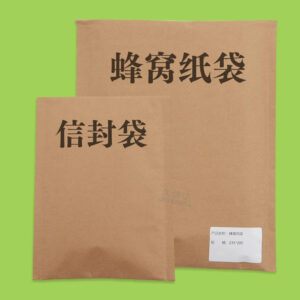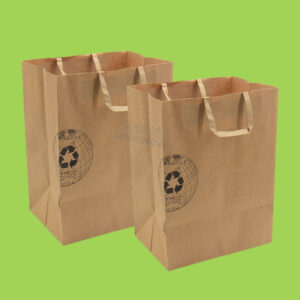Brown paper bags have become popular as an eco-friendly alternative to plastic for carrying groceries, lunches, and various other items. As environmental awareness grows, many people are curious about the sustainability of brown paper bags, especially in terms of composting. Are they compostable, and what benefits or challenges do they bring to the composting process?
Contents
What Makes Brown Paper Bags Compostable?
Brown paper bags are typically made from unbleached, natural paper fibers derived from wood pulp. The unbleached paper is free from synthetic dyes, coatings, and chemical additives, making it generally safe for composting. Since they are derived from plant materials, brown paper bags are biodegradable and will naturally break down in a compost environment, given the right conditions.

The Composting Process for Brown Paper Bags
To compost a brown paper bag effectively, tearing it into smaller pieces speeds up decomposition. In a compost pile, microorganisms and insects consume organic matter, breaking it down into rich, soil-like material called compost. Brown paper bags, being carbon-rich (also known as “browns” in composting terms), help balance the nitrogen-rich (“greens”) materials like food scraps and grass clippings. Together, this mix creates an ideal environment for microbial activity, essential for producing quality compost.
However, it’s important to check for any coatings or inks on the bag, as these might not be compost-friendly. Some brown paper bags may contain plastic linings or heavy dyes, which can interfere with the composting process and could introduce unwanted chemicals into your compost.
Benefits of Composting Brown Paper Bags
- Reduces Waste in Landfills: Paper bags that end up in landfills decompose more slowly due to the lack of oxygen, often releasing methane, a potent greenhouse gas. Composting diverts these bags from landfills, reducing greenhouse gas emissions.
- Adds Carbon to Compost: Brown paper bags are an excellent source of carbon, which balances nitrogen-rich items like food scraps. The right carbon-to-nitrogen ratio helps produce high-quality compost, improving soil health and supporting plant growth.
- Supports Sustainability: Using and composting brown paper bags fosters a circular lifecycle. By composting them, individuals contribute to a more sustainable environment, as compost can be used in gardens and farms to enrich the soil.
Tips for Composting Brown Paper Bags
- Shred or Tear: Smaller pieces break down faster, helping the bags integrate more quickly with other compost materials.
- Avoid Bags with Plastic or Heavy Ink: These bags might contain substances harmful to the compost. Only plain, uncoated brown bags are recommended.
- Balance with Nitrogen-Rich Materials: Since paper bags are high in carbon, make sure to add food scraps, grass clippings, or other nitrogen-rich materials to maintain balance in the compost.
Challenges to Consider
Although brown paper bags are generally compostable, some limitations should be noted. If the bag contains any lining (e.g., plastic), it should not be added to compost. Additionally, composting large amounts of brown paper may overwhelm a small compost pile with too much carbon, so it’s best to add them in moderation or as needed.
Brown paper bags, when free of coatings and dyes, are compostable and can be an excellent addition to a balanced compost pile. By composting them, you help reduce waste, enhance compost quality, and support environmental sustainability. While a simple shift, composting brown paper bags is a small but meaningful step toward a greener planet.




